Find our content helpful? You can support the BFT team by making your gear, apparel, and travel purchases through the affiliate links in this blog post. We get a small commission with no added cost to you. You can also say thanks by leaving a tip in our virtual tip jar. THANK YOU!
If you’ve spent any time researching hikes or backpacking trips, you’ve probably come across lingo or acronyms that are unfamiliar. Even as an avid hiker who writes about the outdoors for a career, I still stumble upon hiking terms I have to look up every once in a while. I recently learned “Middle Blues,” (definition below), which describes a feeling I’ve never been able to put into words.
While learning hiking lingo is by no means a prerequisite to getting out in nature, it can make you feel a little more confident and “in the know”. It’s helpful to understand what certain terms mean and why they matter, especially when it comes to gear and directions. For example, it’s a lot easier to know what “hike the switchbacks and then look for the blaze” means when you know the definition of a blaze.
The below “hiking glossary” includes a list of common terms that describe gear, trails, and backpacking styles along with other hiking trail terms I’ve heard during my adventures. I think of them as handy shortcuts to better understand the outdoors and the hiking community as a whole.
Let me know in the comments if I missed one of your go-to hiking terms or phrases!

Download my FREE Outdoor Trip Planning Toolkit
Enter your email to get access to printable PDF packing checklists, itineraries, and more.
A-D (Access Trail – Day Hike)
Access Trail
A trail that provides access to a specific area (like a beach or a recreation area) or quick access to another trail.
AT
Spanning 2,100+ miles, the Appalachian Trail (AT) stretches from Georgia to Maine on the east coast.
Backcountry
A wilderness area that is accessed by trails (not a road). In the backcountry, you’re very unlikely to find amenities like shelter, bathrooms, and filtered water.
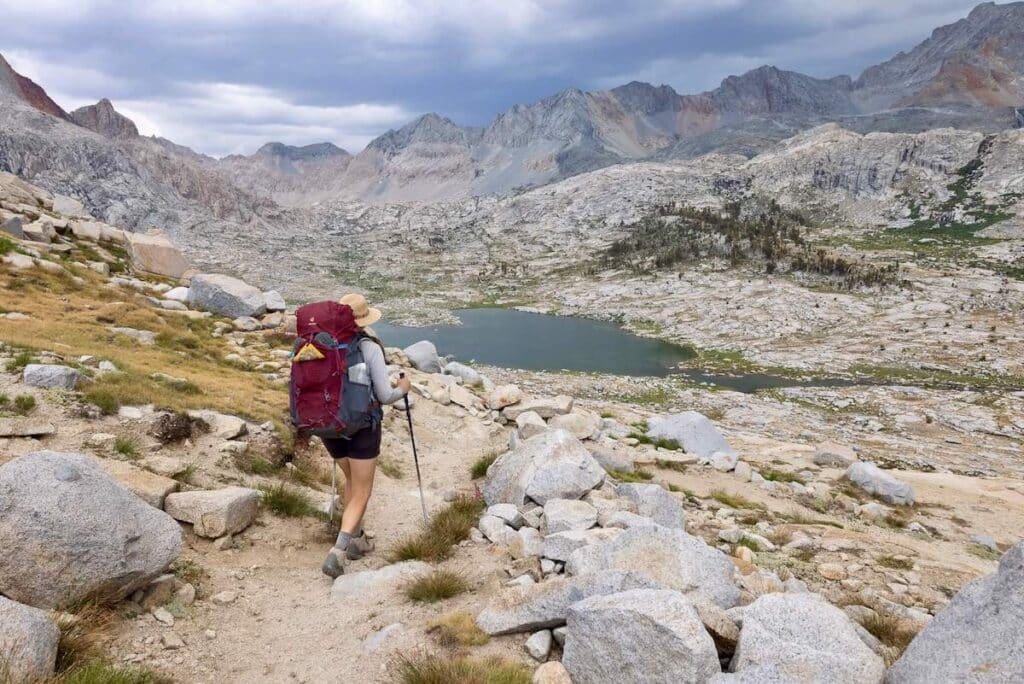
Base Weight
The amount of weight in your backpack — excluding food, water, and fuel. Your base weight will help you gauge how much you’ll be carrying as it includes your pack, tent, sleeping bag, clothes, etc.
Bear Cans (or Canisters)
Bear cans, or bear canisters, are cylindrical-shaped containers with a lid that screws on. They’re designed to keep bears out of your food while you are camping or backpacking. Bear cans are recommended – and sometimes even required – when adventuring in bear country.
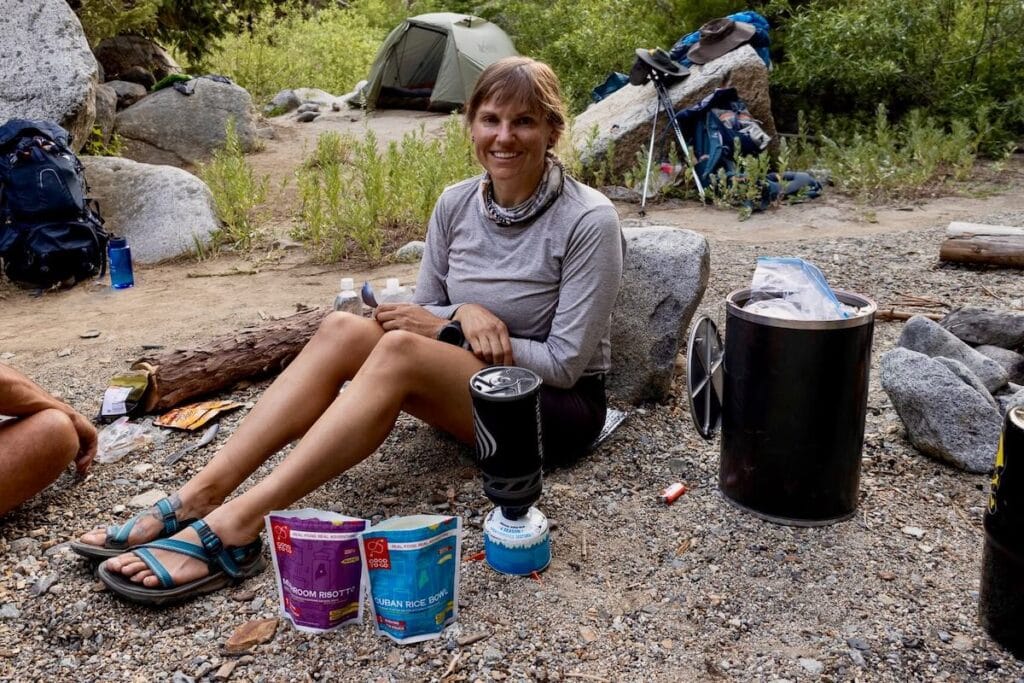
Bivy or Bivy Bags
Bivy is an abbreviation for bivouac shelter, which is a makeshift campsite or shelter. For backpackers, a bivy refers to a lightweight, collapsible bag that is usually water-resistant and helps shield against the elements like rain, wind, etc).
Bivy bags (also referred to as bivy sacks) are often used by solo backpackers who prefer an ultralight setup.
Blaze
Another name for a trail marker, a blaze is commonly used in the eastern United States. They’re often painted marks on rocks or trees. For example, blue blazes are used on the AT to help hikers use side trails and take advantage of shortcuts or avoid steep sections.

Bonk
If you’ve ever gone hiking and lost all your energy, you have experienced the bonk. It typically happens when you’re under-fueled or dehydrated, which can make you feel unmotivated and even shaky or wobbly. I avoid bonking with these plant-based hiking tips.
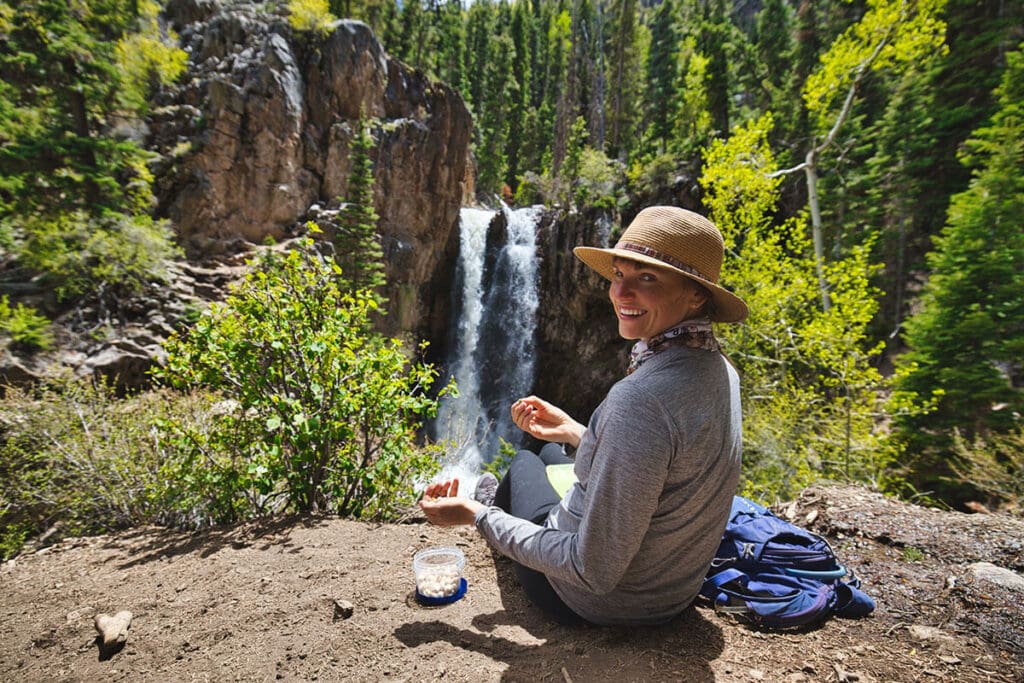
Bushwack
To bushwack means to travel in wild or uncultivated territory. Buckwacking typically involves hiking (often off-trail) through dense brush, unmarked pathways, and unmaintained areas.
Cache
A cache is a container of supplies – food, water, and/or gear – that a hiker hides or buries in the backcountry. Some trails, like the CDT (see below for definition), have designated water cache boxes at trailheads. However, well-intentioned caches can lead to piles of litter and unintentional wildlife feeding if not stashed properly.
Cairn
A stack of stones that serve to help with trail navigation and safety — not for aesthetics. Learn more about rock cairns.
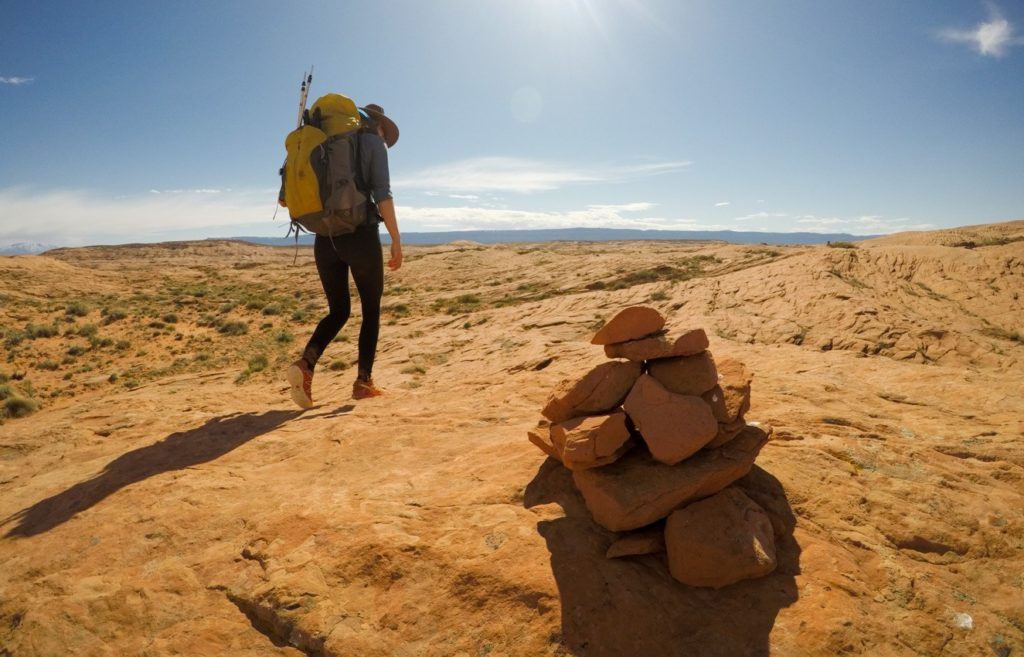
Cathole
A hole for your poop! Catholes must be at least six inches deep and located at least 200 feet from water sources. Ideally, a cathole is in a sunny spot, which will speed up the decomposition.
Pro tip: Use a backcountry trowel and start digging before you really have to go because it takes a few minutes to do it right.

CDT
One of the most popular thru-hikes, the Continental Divide Trail (CDT) runs from Mexico to Canada and spans 3,100 miles.
Cowboy Camping
Cowboy camping means sleeping on the ground without a tent or shelter. It generally involves setting up your sleeping bag and sleeping pad on a ground cloth and calling it a day.
Sometimes hikers go for cowboy camping life when they’re exhausted and don’t feel like setting up a tent. However, others enjoy the low-maintenance simplicity of the experience. That said, I always recommend having a tent on hand just in case.
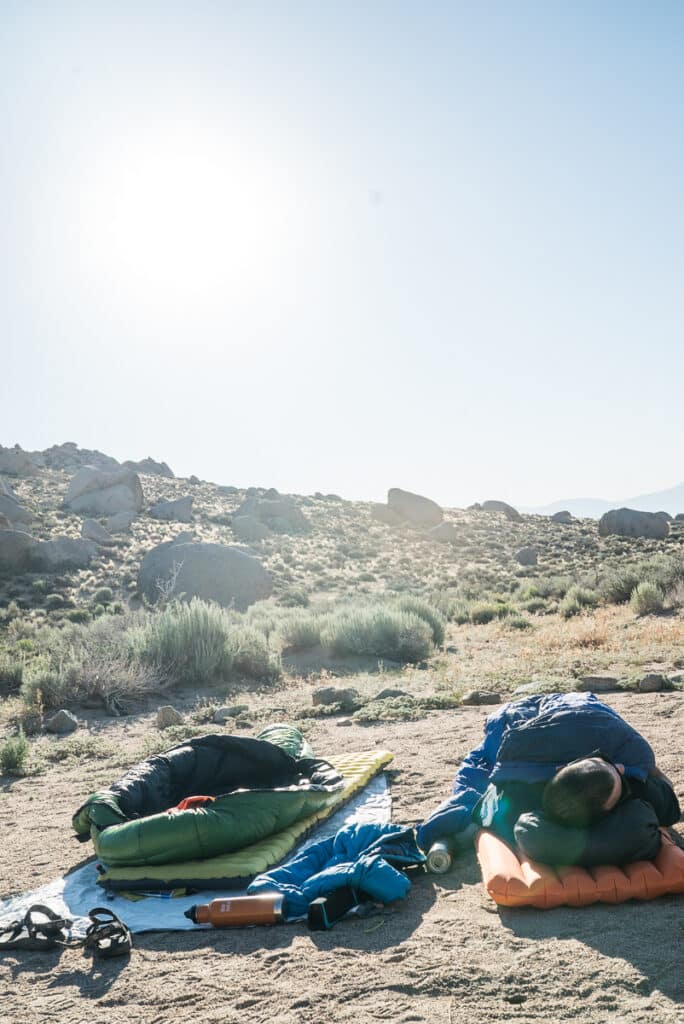
Crampons
Crampons are a device hikers put on their shoes to help walk on firm snow and ice. They’re more durable than microspikes (more on that below) and especially helpful on steep, slick inclines. Although crampons aren’t super comfortable to walk on, you can easily pop them off when you don’t need them.
Day hike
A day hike is a hike that’s short enough to be completed in a day. For anyone looking to get outdoors without needing to set up camp overnight, a day hike is a wonderful way to go — and there’s no shortage of incredible day hiking options!
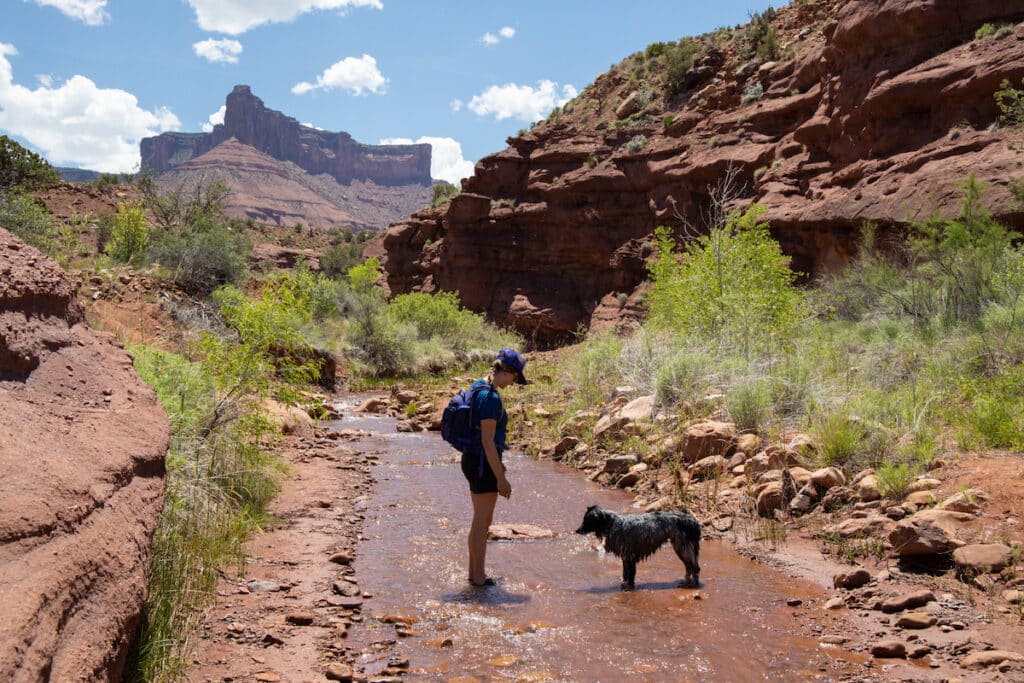
E-H (Fastpacking – Hydration Reservoir)
Fastpacking
Fastpacking is a combination of running and backpacking. Usually, someone who likes fastpacking will also keep an ultralight setup, so they can be light on their feet and cover more ground.
False summit
A point on the trail that looks like it should be the mountain’s summit but it isn’t.
Flipflop
Flip-floppers usually start somewhere in the middle of a trail, head in one direction until they reach the end, and then return to the starting point and finish the trail in the other direction.
Fourteeners (14ers)
Much like the name suggests, Fourteeners are peaks that rise more than 14,000 feet above sea level. Colorado is home to the most 14ers in the United States.
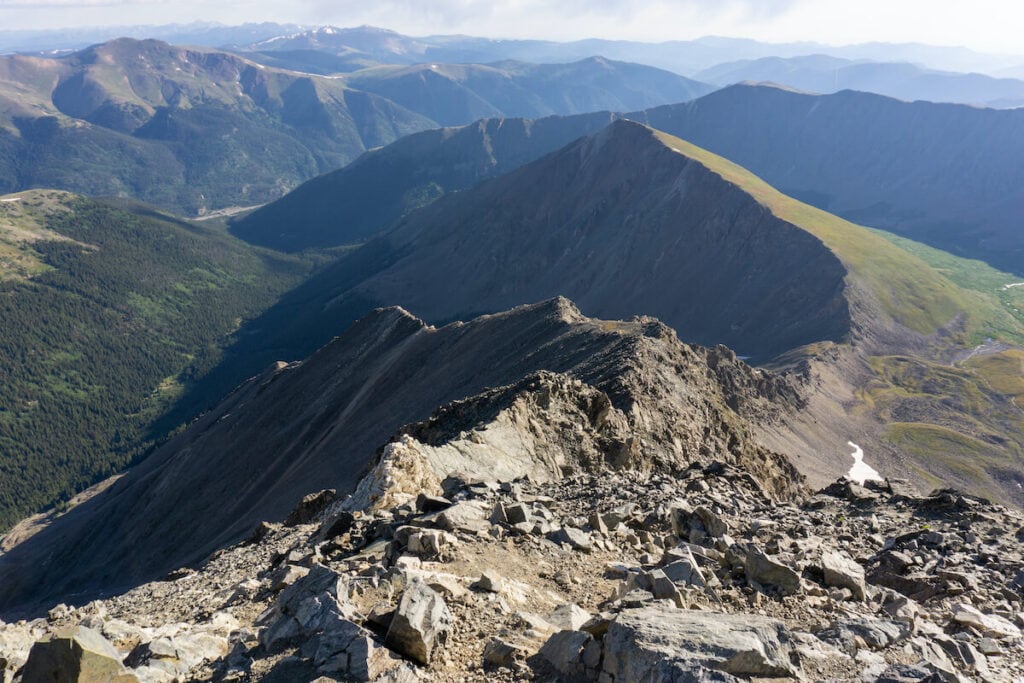
Frontcountry
The opposite of backcountry, frontcountry refers to more developed and accessible areas. They’re usually marked and signed better than backcountry routes — and they don’t always require hiking to reach them. A frontcountry campsite often means a campsite you can drive to.
Gaiters
Gaiters are a synthetic or leather garment worn on the lower part of the leg. Their purpose is to keep your legs and ankles dry and free of dirt, snow, pebbles, water, etc when hiking or backpacking.
Glissading
The act of descending a steep snow or ice-covered slope by sliding with control while seated. The feet are in front front and legs are slightly bent. Think: sledding sans the sled!
Important: you need to be an experienced mountaineer or with a guide to glissade safely. Falling into a crevass or sliding into a rock field are real dangers when glissading.
Gorp
“Good old raisins and peanuts”. Gorp (aka trail mix) is a common hiking snack and usually includes more ingredients like nuts, seeds, and M&Ms.
GPS
GPS stands for Global Positioning System. It’s a space-based radio navigation system owned by the US government and operated by the United States Air Force. Handheld GPS devices are used by hikers to get information about where they are — and how to get from Point A to Point B.
You can also get a GPS communication device like the Garmin inReach Mini, which allows you to send two-way messages in the backcountry in case you get into trouble.
Grade
The steepness of a trail. It’s usually expressed as a percentage. A trail with an average grade of 5% is pretty mellow while trails that have more than a 5% great are more challenging.
High Apline
High alpine refers to high, lofty mountains, typically above the treeline.

Highpointing
Highpointing refers to climbing to the highest point in an area. Some hikers have goals like “highpointing in every state” or “highpointing in every National Park”.
Hiker box
A hiker box is a box or bag where folks leave items for other hikers. They’re usually filled with extra snacks, supplies, bandanas, etc. They’re like a hiking edition of ”little free libraries.” You’ll find many hiker boxes on thru-hikes like the John Muir Trail.
Hot spots
Hot spots are the irritated red spots on your feet, toes, or heels that show up before blisters. It’s best to treat hot spots before they turn into full-blown blisters. Read our best tips for preventing blisters.
Hydration reservoirs
A hydration reservoir – sometimes called bladders – is a flexible, water-tight bag equipped with a drinking hose. They’re designed to be carried in a backpack or hydration pack for easy and hands-free access to water.
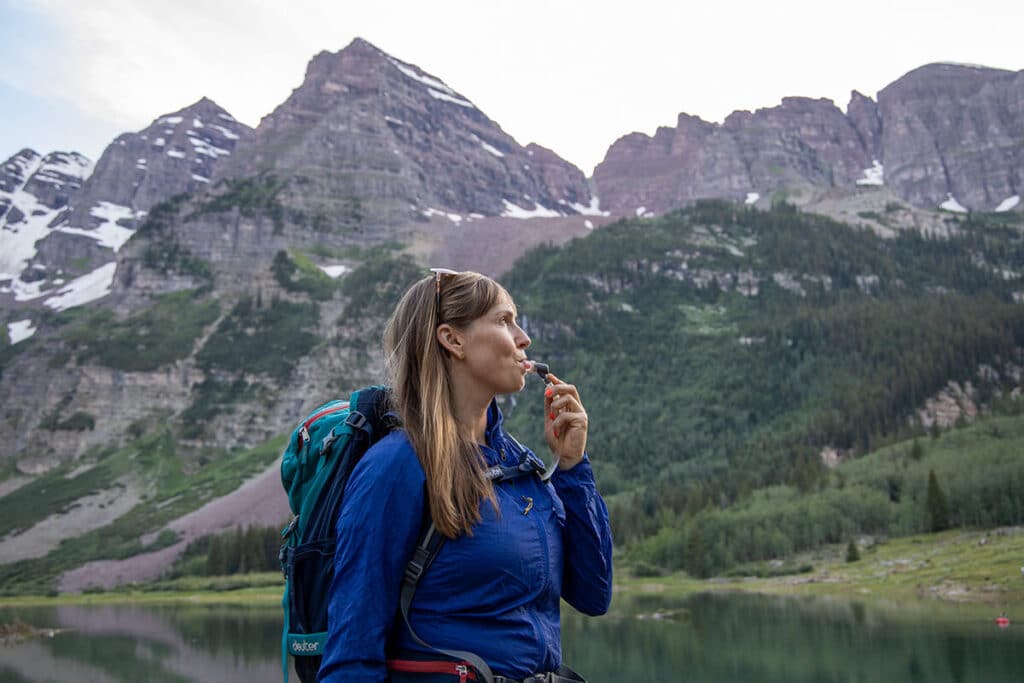
I-L (JMT – Leave No Trace)
JMT
The John Muir Trail (JMT) is 220 miles of epic wilderness through California’s High Sierras. It takes about three weeks to hike and if you can take the time to do it, I couldn’t recommend it more. I hiked the JMT in 2014 and it was a truly life-changing experience.
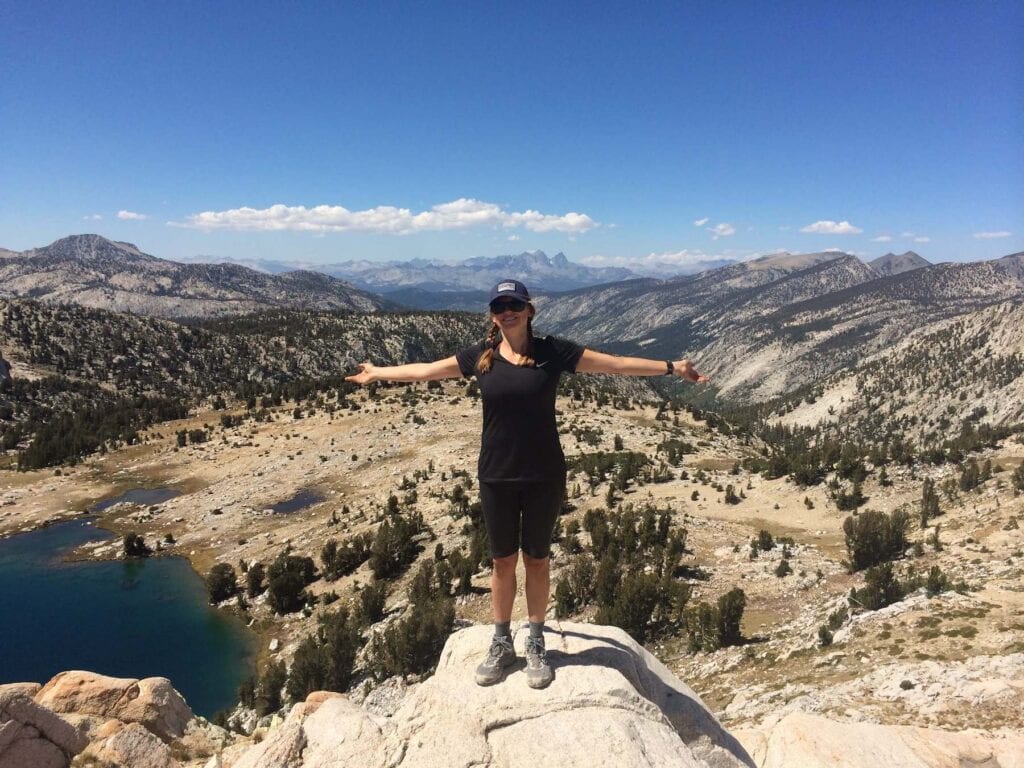
LASH
This is an acronym that stands for “long a** section hike.” It’s often used to describe hikers who trek large sections of thru-hike.
Leave No Trace
Simply put, Leave No Trace (LNT) refers to the concept of making a minimal impact on the environment and respecting the land whether you’re hiking, camping, picnicking, or just enjoying the outdoors.
While there are 7 Leave No Trace principles, LNT is more than a set of guidelines; it’s a framework for making responsible decisions when we’re outside. LNT encourages respect and awareness when interacting with the environment and fellow adventurers.
M-P (Microspikes – Post Hike Depression)
Microspikes
Microspikes add traction to your footwear to help prevent slipping on ice. They’re made of chains and tiny spikes that slip on over your boots. The Kahtoola MICROspikes are easy to slip on, can be thrown in your pack when not needed, and they make a world of a difference.
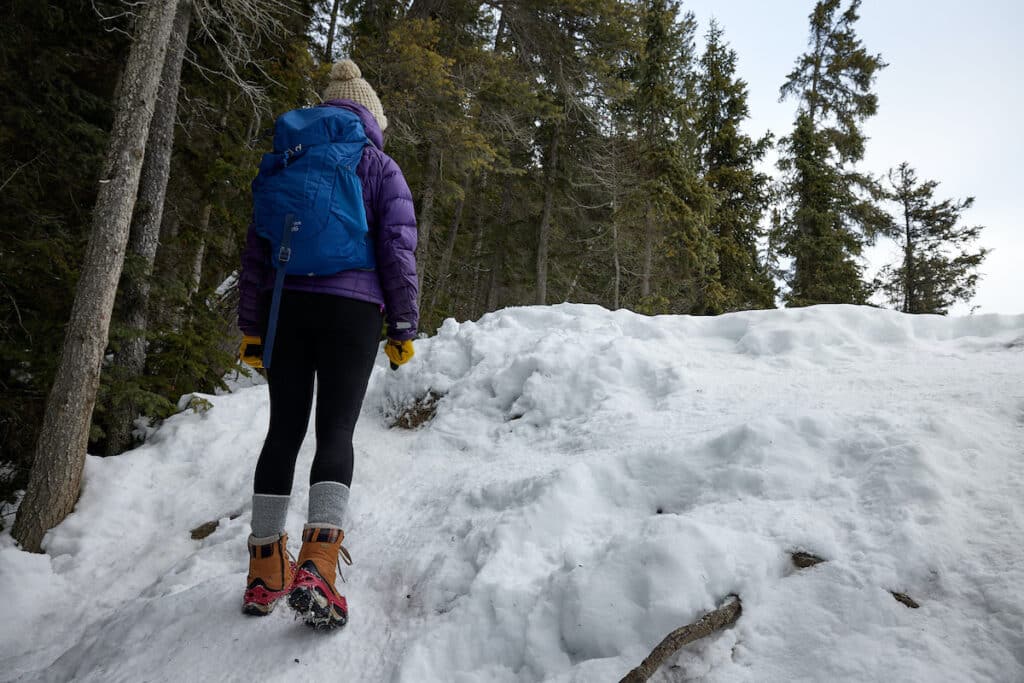
Middle Blues
Middle Blues — also known as “halfway blues” — describes the feeling when you’ve hiked a big chunk of a trail but still have a lot still to go.
NOBO
NOBO means a “northbound” hiker.
Out-and-back
Unlike a loop, an out-and-back trail is a route that involves going one direction and then retracing your steps to go back to the starting point.
PCT
The Pacific Crest Trail (popularized in Cheryl Strayed’s memoir Wild) is a 2,653-mile thru-hike that runs along the mountain ranges of California, Oregon, and Washington. The route passes through 25 national forests and 7 national parks. Considering a thru-hike?

Peak bagging
Peak bagging is the pursuit of climbing mountains and reaching the summit, so the peak is “in the bag.” Peakbaggers often have a bucket list of peaks they want to climb within a specific timeframe.
Post-Hike Depression (Or Post-Trail Blues)
The feeling of sadness after finishing a trail. It’s especially common for thru-hikers and is a completely normal reaction that many hikers experience (myself included). It can be a challenging transition back to everyday routines after being immersed in nature for long stretches of time.
Q-T (Right of way – Triple Crown)
Right of way
Right of way refers to how we share space on the trail. Whoever has the “right of way” is the one who proceeds first. Trail etiquette designates that hikers going uphill have the “right of way.”
Saddle
A saddle is the lowest area between two highlands or peaks.
Scramble
Make your way up steep hills and rugged terrain using both feet and hands. Sometimes sections of trail can be called ‘a scramble’.

Scree
Scree refers to small, loose stones on a slope or the base of a mountain. It’s usually challenging to keep your footing on scree (especially when going uphill), so I recommend going slow to avoid slipping.

Section hiking
A section hiker will trek segments of a thru-hike over a period of time rather than hiking a trail in one continuous go. For example, there are a number of ways to section hike the John Muir Trail.
Shoulder season
Shoulder season refers to the months right before and right after summer. In other words, late fall and early spring. Depending on the area, the shoulder season is usually late April/early May and late September/early October.
It’s personally my favorite time of the year to go backpacking since it’s a little less crowded and still great weather-wise.
SOBO
A southbound hiker.
Spur trail
A spur trail branches off from a main trail, but rather than looping and connecting with another trail, it results in a dead end. Often, a spur trail leads to a viewpoint or a campsite.
Switchback
Switchbacks are zig-zaggy parts of a trail that go back and forth horizontally up a hill, so hikers aren’t going straight up and down. They ease the steep ascents and/or descents.
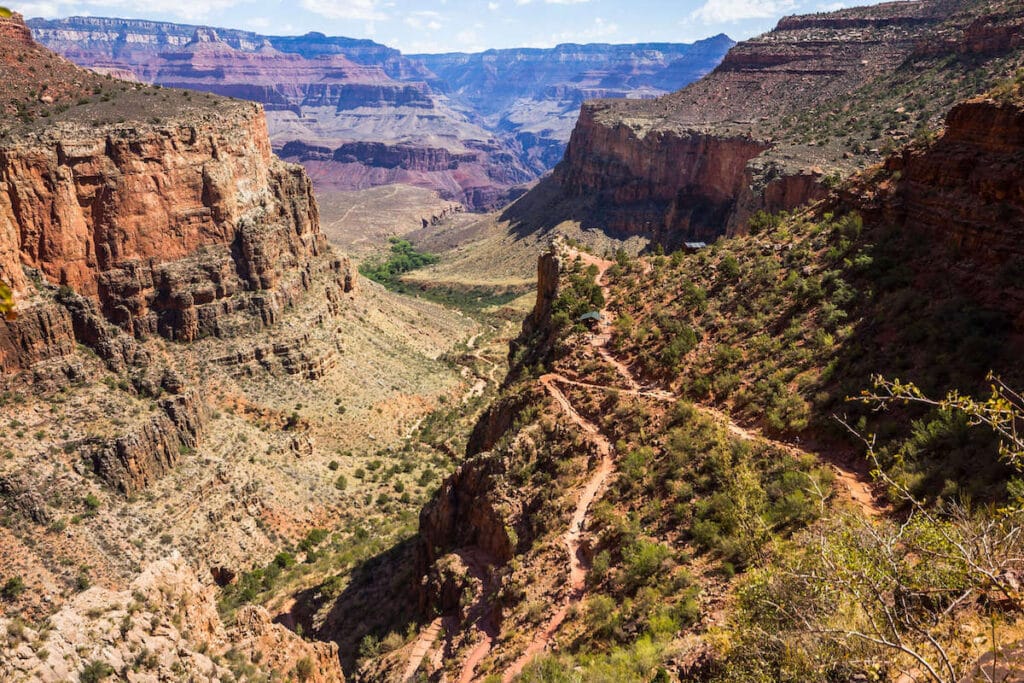
Talus
A field of boulders or rock debris at the bottom of a cliff.

The Ten Essentials
The 10 Essentials is a list established in the 1930s to help climbers and adventurers be prepared in emergencies. The list includes:
Thru Hike
Thru-hiking means hiking an established end-to-end trail in one trip, over days, weeks, or months. Some of the most popular thru-hikes are The Pacific Crest Trail, Appalachian Trail, Continental Divide Trail, and the John Muir Trail.
Topo lines or topo map
Topo maps, short for topographic maps, are a detailed and accurate two-dimensional representation of natural and man-made features on the Earth’s surface.
These types of maps distinguishes itself from other maps by their ability to show elevation and terrain contours, indicating the shape and height of the land through the use of contour lines.
They can be confusing to read if you’re not sure what you’re looking at. Use our guide on how to read a topographic map to help you prepare for the backcounty.
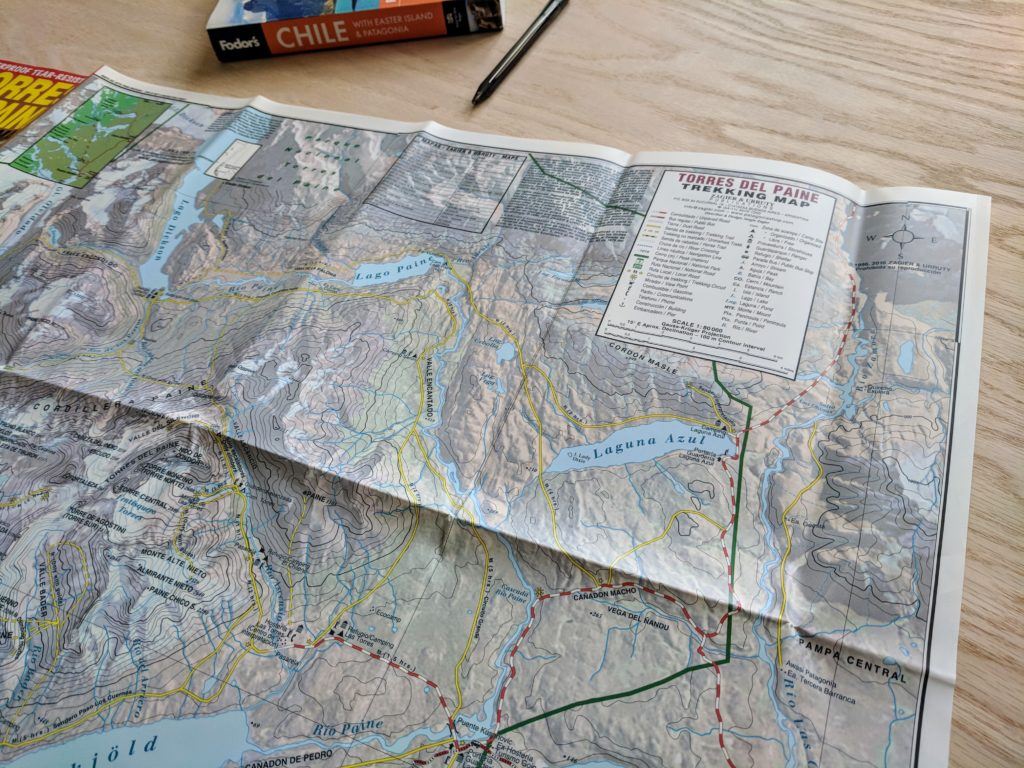
Trail Angels (or Trail Magic)
A trail angel is a person who offers thru-hikers some kind of kindness or service on the trail, but they’re typically not thru-hiking themselves.
They may leave beverages in a cold stream, offer a ride back to a trailhead, or even invite you over for a home-cooked meal and bed for the night.
Trailhead
The place where the trail starts is called a trailhead. If you’re hiking a loop, then the trailhead will also be where you end your hike.
Trail junction
When two trails converge.
Triple Crown
A nickname for the “big three” long trails in the United States: the AT, CDT, and PCT.
U-Z (Ultralight – Zero Days)
Ultralight
Like it sounds, ultralight means very light. Ultralight backpackers are generally very focused on the weight of each item they carry to minimize their load. However, the term also refers to a state of mind where “less is more.”
WAG Bag
Literally, WAG stands for “waste aggregation gelling.” But it’s a word to refer to a poop bag that you’ll use to take your feces away from certain wilderness areas. For example, there are no public toilets at Mt. Whitney, so remember to pack your WAG bags.
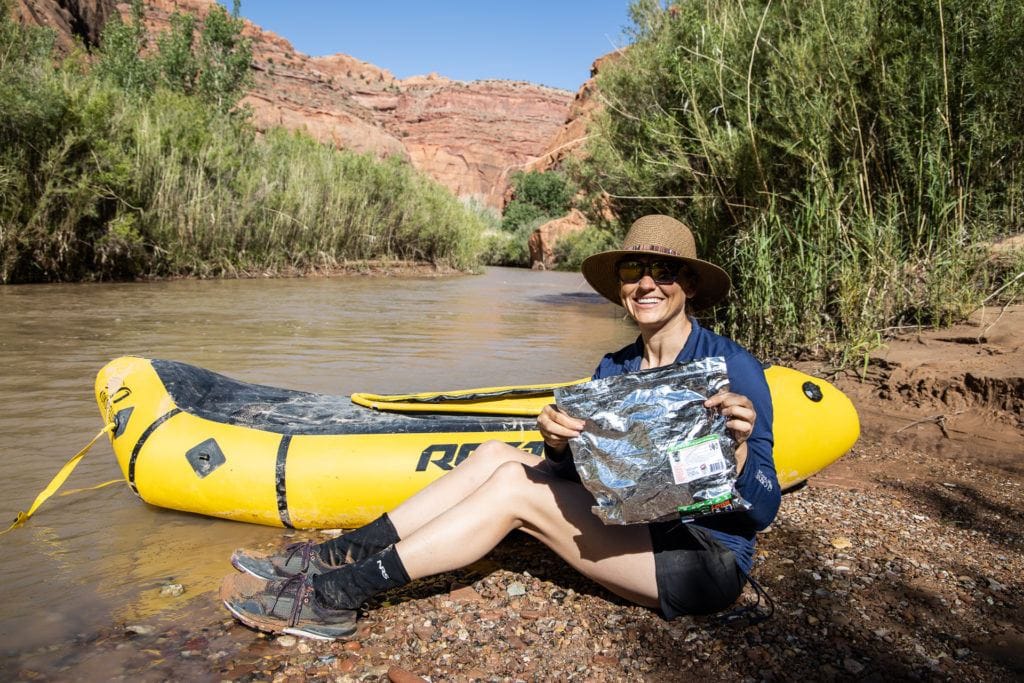
Waypoint
A waypoint is a reference point that helps you figure out where you are and how to get to where you want to go. When hiking, waypoints are often used to mark important turns on trails or points of interest. The North Star is a standard waypoint that’s been used for centuries, but they can also be rock formations, mountains, signs, or buildings.
Weekend Warrior
While a thru-hiker spends weeks or months backpacking at a time, a weekend warrior typically spends 1 to 3 nights camping, backpacking, and/or hiking over the weekend.
I’ve had periods of my life where I’ve been a thru-hiker and others when I’ve been a weekend warrior. There are benefits to both!
Wicking
Wicking is the ability to absorb or draw off liquid from a piece of gear or clothing. Moisture-wicking fabrics are quick-drying, breathable, and lightweight, which is why they’re so popular among hikers.
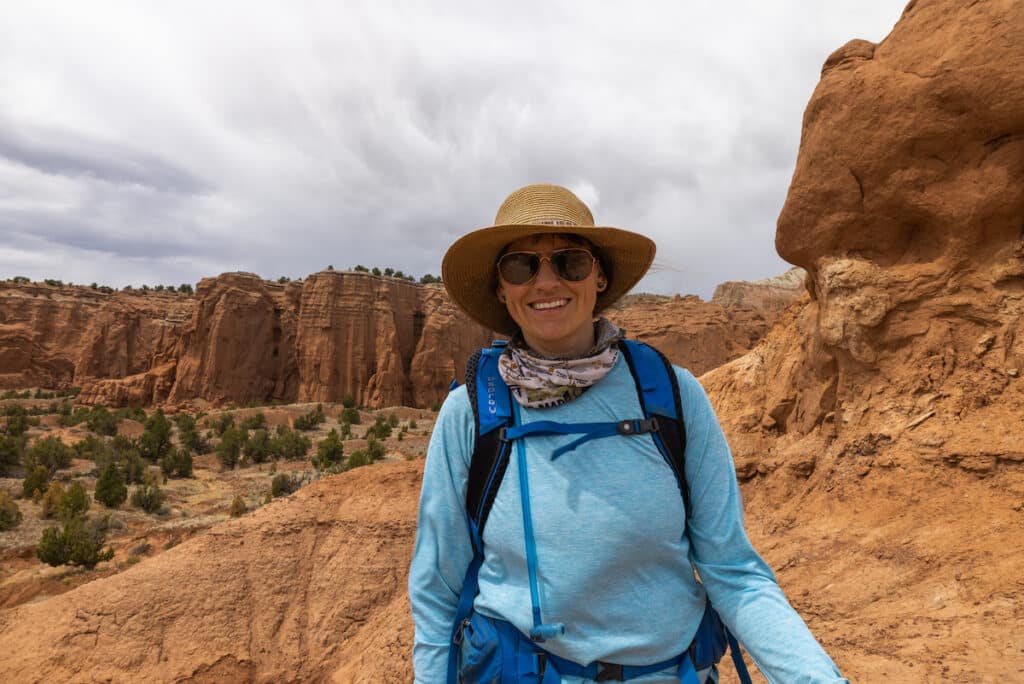
Widowmaker
A widowmaker is a large dead branch up in a tree or an entire dead tree that is still standing. They’re important for hikers to recognize as these trees or branches could fall at any time (especially when it’s windy. You don’t want to set your tent up underneath one.
Zero days
A zero day refers to a day of rest when thru-hikers cover zero miles. I’m a big fan of zero days and recommend them to give your body a break, play tourist, and catch up with friends.
New to hiking? Check out these posts to help you prepare for the trail:
Save this post to Pinterest
What are your favorite hiking terms? What hiking slang did you have to look up when you first started? What new phrases did you learn from this post? Leave a comment and let us know!
Related Posts

